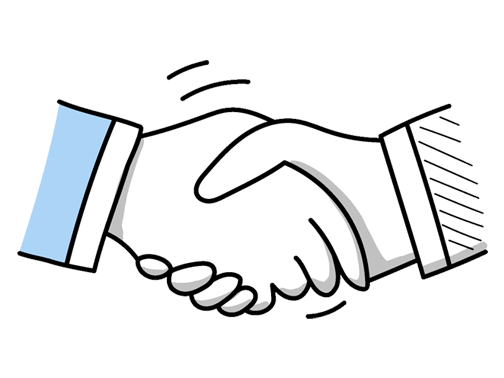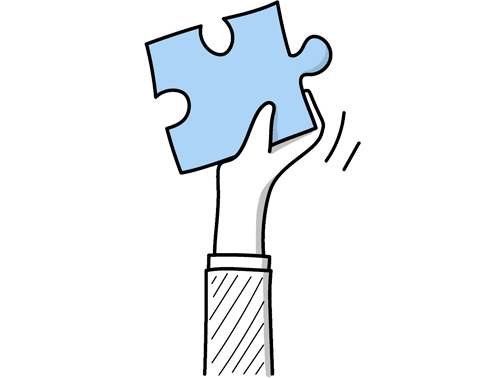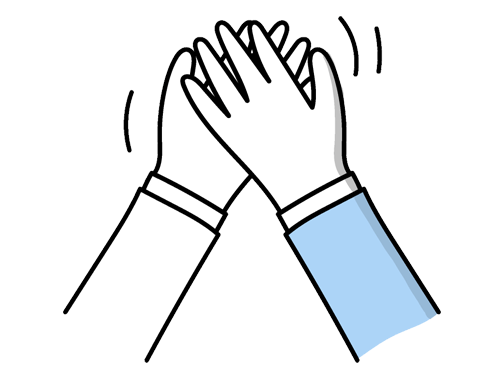Sewing Room Assistant Interview Questions (2025 Guide)
Find out common Sewing Room Assistant questions, how to answer, and tips for your next job interview
Practice Interviews Online - Identify your strengths and weakness in a realistic Sewing Room Assistant mock interview, under 10 minutes
Practice Now »Sewing Room Assistant Interview Questions
What they want to know is if you understand that different fabrics require different handling to avoid damage and ensure quality. You need to say that you carefully assess each material's texture and weight, adjust your techniques accordingly, and always follow specific care instructions.
Example: I always take time to understand each fabric’s unique qualities—whether it's delicate silk or sturdy denim. Handling them carefully helps prevent damage and ensures quality. For example, I adjust the machine settings or needle type depending on the material. I’ve found that treating each fabric with respect not only preserves its look but also makes the sewing process smoother and more efficient.
Hiring managers ask this question to see if you can manage your time, stay organized, and handle challenges effectively to complete projects on schedule. You need to explain that you plan your tasks by breaking down the project into steps, communicate progress regularly with your team, and adapt quickly to any issues to maintain quality and meet deadlines.
Example: To meet sewing project deadlines, I break tasks into manageable steps and keep track of progress throughout. If I notice any delays, I make sure to update the team early so we can adjust if needed. For example, when fabrics arrived late in my last role, I quickly reorganized the workflow to focus on other pieces, ensuring the overall deadline was still met without compromising quality.
What they want to understand is your hands-on experience and skill level with different sewing projects. You need to clearly state the types of garments or items you've sewn and mention any special techniques or complexity involved to demonstrate your competence.
Example: In my previous work, I’ve sewn a variety of garments including children’s clothing, simple dresses, and alterations like hemming trousers. I’m comfortable using both industrial and domestic sewing machines, handling tasks like topstitching and inserting zips. I enjoy working on projects that require precision, such as pleats or buttonholes, and I’m always keen to ensure the finished item looks neat and professional.
This interview question helps assess your ability to work collaboratively and maintain efficiency in a busy sewing room. You need to say that you communicate clearly by explaining tasks and priorities, listen actively to team feedback, and share regular updates to keep everyone coordinated.
Example: I make sure to keep communication straightforward and open, so everyone knows what’s happening and what’s needed. I listen carefully when team members share concerns or ideas, which helps me adjust and support them better. For example, if someone’s machine is running slow, I’d quickly step in or rearrange tasks to keep things moving smoothly. It’s all about staying connected and flexible to keep the workflow steady.
Hiring managers ask this question to see how you handle challenges and use creativity to solve problems on the spot. You need to briefly explain the problem, the creative solution you came up with, and the positive outcome it achieved.
Example: In a previous role, we ran low on a specific thread shade mid-project. Rather than halt progress, I carefully blended two similar colours to match the fabric. It wasn’t perfect, but it kept the seams strong and the finish neat. This approach saved time and avoided waste, showing that sometimes a bit of flexibility and problem-solving keeps everything on track.
What they want to know is how you contribute to a positive team environment and help overcome problems. You should say you listen to their concerns and offer practical help or advice to make tasks easier.
Example: When a colleague is having a tough time, I listen first to understand their challenge. Sometimes, just sharing the load or offering a fresh pair of eyes can make a big difference. For example, if someone is struggling with a tricky pattern, I might step in to help troubleshoot or suggest a different approach. It’s all about teamwork and keeping the workflow smooth.
Questions like this assess your ability to understand and work with sewing patterns accurately, which is crucial for producing quality garments. You should explain how you identify pattern pieces and symbols, and mention any experience you have adjusting patterns for different sizes.
Example: Yes, I’m comfortable working with sewing patterns and pay close attention to the details to ensure accuracy. When I’ve come across tricky sections, I make sure to clarify any uncertainties promptly to avoid errors. For example, in a previous project, I carefully matched pattern pieces by size and shape before cutting, which saved time and prevented mistakes down the line.
This interview question helps assess your teamwork skills and how you contribute in a collaborative sewing environment. You need to briefly describe a specific team project and clearly state your role and responsibilities within that team.
Example: Yes, I’ve worked closely with a team in a sewing room setting. My role often involved preparing materials and assisting with stitching tasks to keep the workflow smooth. For example, I helped organize fabrics and supported the lead seamstress during busy periods, ensuring deadlines were met without compromising quality. Being part of a team helped me understand the importance of communication and collaboration in achieving shared goals.
Employers ask this to ensure you can operate and maintain various sewing machines safely and effectively. You need to explain your experience using both industrial and domestic machines, and mention specific skills like adjusting tension settings for different fabrics.
Example: I’ve worked with a range of sewing machines, from basic straight-stitch models to more complex overlockers. I’m comfortable adjusting settings and troubleshooting common issues to keep everything running smoothly. When I encounter a new machine, I take time to get familiar with its features, ensuring I use it correctly and safely. This approach has helped me adapt quickly and maintain quality work across different equipment.
This interview question helps the employer understand how you handle multiple tasks and stay productive under pressure. You need to explain that you prioritize tasks by urgency, organize your work with a to-do list, allocate specific time blocks for different sewing activities, and remain flexible to adjust when unexpected issues arise.
Example: In a busy sewing room, I start by identifying which tasks need attention first, focusing on those with tight deadlines or bigger impact. I break my day into manageable chunks, balancing machine work with quality checks. When unexpected issues arise, like a malfunction or a last-minute order, I stay flexible and adjust my plan without losing momentum. This approach helps me keep everything running smoothly and on time.
Interviewers ask this question to see how you troubleshoot problems quickly and keep the project on track. You need to say you would first identify the problem with the sewing machine, try simple fixes like rethreading, and communicate with your team to reduce delays.
Example: If a sewing machine stopped working during a project, I’d first check what’s wrong—whether it’s a thread jam or a mechanical issue. Then, I’d try a quick fix, like rethreading or adjusting settings, to keep things moving. While doing so, I’d update the team to manage expectations and reorganise tasks if needed, ensuring the project stays on track despite the setback.
What they want to know is how proactive you are about learning and growing in your role. You should explain the steps you took to improve, like attending courses or practicing regularly, and give examples of how overcoming challenges has helped you work more efficiently and with better quality.
Example: Over time, I’ve honed my sewing skills by practicing new techniques regularly and seeking feedback from experienced colleagues. When I encountered tricky patterns, I took extra time to break them down step-by-step, which helped me avoid mistakes and improve accuracy. This approach has not only boosted the quality of my work but also allowed me to complete tasks more efficiently, contributing to a smoother workflow in the sewing room.
Questions like this assess your commitment to producing high-quality work and your ability to catch and fix mistakes early. You should mention careful checking of seams for even stitches, promptly correcting errors like loose threads, and choosing the right tools and methods for different fabrics.
Example: To keep my sewing work sharp, I focus closely on even stitches and handle fabrics gently to avoid snags. I regularly check my work as I go, catching any mistakes early so they’re easier to fix. Knowing different fabrics helps me choose the right needle and stitch type, like using a tighter stitch for delicate materials to ensure the final piece is both strong and neat.
Hiring managers ask this question to see how you work with others and support team goals. You need to say how you take initiative to organize tasks, communicate clearly with your teammates, and stay flexible by adapting to different roles as needed.
Example: I usually take on a supportive role, making sure everyone has what they need to get the job done smoothly. I like to keep communication clear and open, checking in with others to avoid any mix-ups. If someone needs help, whether it’s sorting materials or double-checking measurements, I’m happy to step in. Being adaptable helps the whole team stay on track and meet our goals efficiently.
What they want to understand is how you stay focused and consistent in tasks that can become monotonous, ensuring quality doesn’t slip. You should say you use techniques like breaking tasks into smaller steps and taking short breaks to stay alert and maintain accuracy.
Example: I stay focused by breaking the work into small steps and setting mini-goals, which keeps me engaged. For example, when I previously sorted large batches of fabric pieces, I’d double-check each one for defects before moving on. This approach helps me maintain accuracy without feeling overwhelmed by the repetition. It’s about finding a rhythm and staying mindful throughout.
This interview question helps the employer see how you manage teamwork and maintain a positive work environment despite challenges. You should explain that you listen carefully to understand your coworkers’ perspectives, stay calm and professional during disagreements, and work together to find practical solutions that benefit the whole team.
Example: When disagreements arise, I make sure to listen fully to understand where everyone’s coming from. Staying calm helps keep the atmosphere positive, which is key in a busy sewing room. I focus on working together to find a solution that keeps things moving smoothly. For example, if there’s a difference in how a task should be done, I suggest we try both ways and pick what works best.
This interview question helps the employer understand how well you work with others and solve problems in a team setting. You need to explain how you communicated clearly, collaborated on tasks, overcame challenges together, and supported your teammates to complete the sewing project successfully.
Example: During a recent project, I worked closely with my team to meet tight deadlines. We kept open lines of communication, regularly checking in to coordinate tasks and address any issues. When a fabric shortage came up, we quickly adjusted our plan, reallocating resources without slowing down. I also pitched in with sewing and finishing to help others, making sure we all stayed on track and delivered a quality product on time.
What they want to know is how you manage your time and tasks efficiently when handling several sewing projects to meet deadlines and maintain quality. You need to say that you assess each project's urgency and importance, schedule urgent tasks first, adjust priorities as needed, and communicate with your team to coordinate work and ensure everything runs smoothly.
Example: When juggling several sewing projects, I start by checking which deadlines are closest and which tasks are most crucial. I break down the work into manageable steps and stay flexible if priorities shift. For example, if a team member needs help to meet their deadline, I adjust my schedule to assist, ensuring the whole workflow stays on track. Clear communication and staying organized really help keep everything running smoothly.
Questions like this assess your ability to take initiative and show dedication beyond basic duties, which is crucial in a fast-paced sewing environment. You need to describe a specific example where you exceeded expectations, explain the positive result, and highlight your reliability and quality under pressure.
Example: In my last role, I noticed we were falling behind on a big order, so I stayed late to help finish the sewing and double-checked the quality to avoid mistakes. It meant the deadline was met, and the team appreciated the extra help. I believe showing that kind of commitment not only supports the team but also builds trust in your reliability when things get tough.
Hiring managers ask this question to see if you can balance speed and quality while working efficiently with others. You need to explain how you organize your tasks, check your work carefully, and communicate well to keep the sewing room running smoothly and meet deadlines.
Example: To keep things running smoothly in the sewing room, I focus on organizing my tasks so deadlines are met without rushing. I pay close attention to each stitch to ensure quality doesn’t slip, even during busy times. Staying in regular contact with my teammates helps us tackle any challenges quickly, so the whole process stays efficient and on track. For example, if a machine needs attention, I communicate promptly to avoid delays.
Interviewers ask this to see if you pay attention to detail and follow processes carefully. You need to say that you double-check measurements, use proper tools, and maintain focus throughout the project.
Example: To ensure precision, I always take time to measure twice before cutting and keep my workspace organized. I find using quality tools and regularly checking my work against patterns helps catch mistakes early. For example, when working on a tailored jacket, I double-check seam allowances to keep everything neat and consistent. Paying close attention throughout the process really makes a difference in the final outcome.
This interview question helps the employer understand your practical skills and familiarity with the sewing environment to ensure you can contribute effectively and safely. You should briefly describe any hands-on sewing or garment production experience and highlight your ability to follow safety rules and keep your workspace organized.
Example: I’ve spent time working in a garment workshop where I helped prepare materials and assisted with machine setup. I’m careful to keep my workspace tidy and always follow safety guidelines to prevent accidents. I’ve also enjoyed collaborating with others on the team, communicating clearly to ensure tasks run smoothly. This experience taught me how important it is to stay organized and work well with colleagues in a busy sewing environment.
This question helps interviewers understand how you handle difficulties and problem-solve in your work. You need to briefly describe the challenge, explain how you addressed it, and share a positive result or lesson learned.
Example: During a tailored jacket project, the fabric was prone to stretching, causing uneven seams. To tackle this, I carefully stabilized the material with interfacing and adjusted my sewing speed to maintain control. This approach ensured neat, precise stitching. The finished jacket fit perfectly and taught me the importance of patience and adapting techniques to different fabrics, which I now apply to all my sewing tasks.
This question is to assess your attention to detail and problem-solving skills in maintaining quality. You need to say you would carefully inspect the mistake, inform your supervisor, and suggest or take appropriate steps to fix it without damaging the piece.
Example: If I spotted a mistake in a finished piece, I’d first check the extent of the error. Then, I’d inform the supervisor or lead immediately to decide on the best fix. If it’s something simple like a loose stitch, I’d correct it carefully to maintain quality. For example, once I noticed a misaligned seam and quickly flagged it before packaging, saving time and avoiding customer issues.
Employers ask this question to understand what drives your work ethic and how committed you are to the role. You need to say that you are motivated by qualities like attention to detail, teamwork, and the satisfaction of producing high-quality garments.
Example: What drives me is knowing that my attention to detail helps keep the production running smoothly. I take pride in supporting the team by ensuring everything is prepared and organised, so the sewers can focus on their craft. It’s rewarding to see a garment come together, knowing the small tasks I handle contribute to the bigger picture. That’s what keeps me motivated every day.
Ace your next Sewing Room Assistant interview with even more questions and answers
Common Interview Questions To Expect
The interviewer is looking for your long-term career goals and aspirations. You can answer by discussing your desire for growth within the company, further education, or career advancement.
Example: In five years, I see myself continuing to grow and develop within the company as a Sewing Room Assistant. I am eager to take on more responsibilities and potentially move into a supervisory role. I also plan to further my skills through additional training and education in the field of sewing and garment construction.
The interviewer is looking for how you handle constructive criticism, your ability to reflect on feedback, and how you have used criticism to improve your work.
Example: Sure! One time, my supervisor pointed out that I was not organizing the sewing materials efficiently, which was causing delays in production. I took their feedback seriously and reorganized the materials in a way that improved workflow. Since then, our team has been able to meet deadlines more effectively.
The interviewer is looking for a candidate who has done their research on the company, understands its values, products/services, and overall mission. Answers should demonstrate knowledge and interest in the company.
Example: I know that your company is a leading manufacturer of high-quality sewing supplies in the UK. I've seen that you prioritize sustainability and ethical sourcing in your products, which is something I really admire. I'm excited about the opportunity to contribute to a company that values quality and social responsibility.
The interviewer is looking for examples of how you prioritize tasks, manage your time effectively, and handle stress in a fast-paced environment. Be honest and provide specific examples from your past experiences.
Example: Yes, I am able to handle multiple responsibilities at once. In my previous role as a Sewing Room Assistant, I was responsible for organizing materials, operating machinery, and assisting with quality control all at the same time. I prioritize tasks based on deadlines and importance, which helps me manage my time effectively and stay on top of my responsibilities.
The interviewer is looking for your level of interest in the company and the role, as well as your curiosity and preparedness. Ask about company culture, team dynamics, or future projects.
Example: Yes, I was wondering about the team dynamics in the sewing room. How do team members typically collaborate on projects?
Company Research Tips
The company's website is a treasure trove of information. Look for details about the company's history, mission, and values. Pay special attention to any information related to their sewing or manufacturing processes. This will give you a sense of the company's culture and what they value in their employees. Also, check if they have a blog or news section where they might share updates about projects or initiatives.
Tip: Don't just skim the website. Take notes and think about how the information you find relates to the role you're applying for.
Social media platforms like LinkedIn, Facebook, Twitter, and Instagram can provide valuable insights into the company's culture and operations. Look for posts about company events, employee achievements, and product launches. This can give you a sense of what the company values and how they treat their employees. Also, look for any posts related to sewing or manufacturing to get a sense of their processes and standards.
Tip: Follow or like the company's social media pages to show your interest and keep up with their latest updates.
Understanding the company's position in the market can help you stand out in your interview. Research their main competitors and understand what sets the company apart. This could be anything from their sewing techniques, unique designs, sustainability practices, or customer service. Having this knowledge will show that you understand the industry and are serious about your role.
Tip: Use tools like Google and industry-specific websites to find information about competitors.
Websites like Glassdoor and Indeed offer reviews from current and former employees. These can give you insights into the company culture, management style, and potential challenges. Remember, take these reviews with a grain of salt as they are subjective and may not represent the overall company experience.
Tip: Look for patterns in reviews. If multiple people mention the same pros or cons, it's likely a consistent aspect of the company.
What to wear to an Sewing Room Assistant interview
- Clean, well-fitted jeans or trousers
- Comfortable, closed-toe shoes
- Smart casual blouse or shirt
- Lightweight sweater or cardigan
- Minimal jewelry, avoid dangly pieces
- Neat and tidy hairstyle
- Light, natural makeup if applicable
- Avoid overly bright or patterned clothing
- Carry a neat and clean handbag or backpack
- Wear glasses instead of contact lenses if needed





